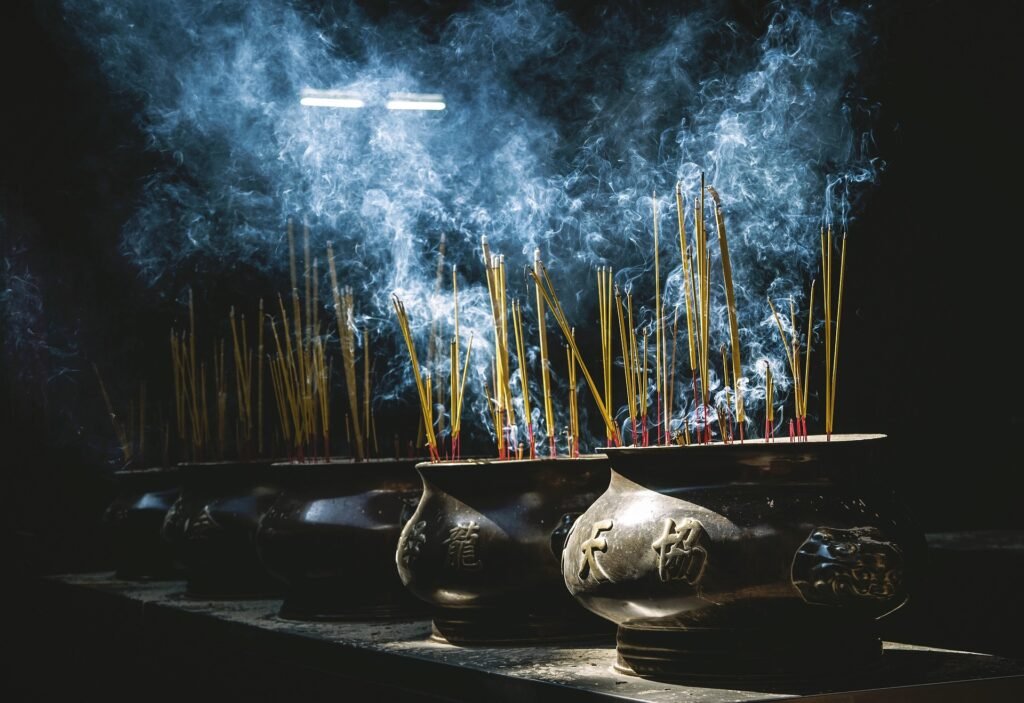From ancient temples to modern homes, the aromatic tendrils of incense have woven their way through human spiritual practice for millennia. But is burning incense truly beneficial for your spiritual journey? This comprehensive guide explores the profound connection between incense and spirituality across cultures, the science behind its effects, and how to incorporate this sacred practice into your own spiritual path.
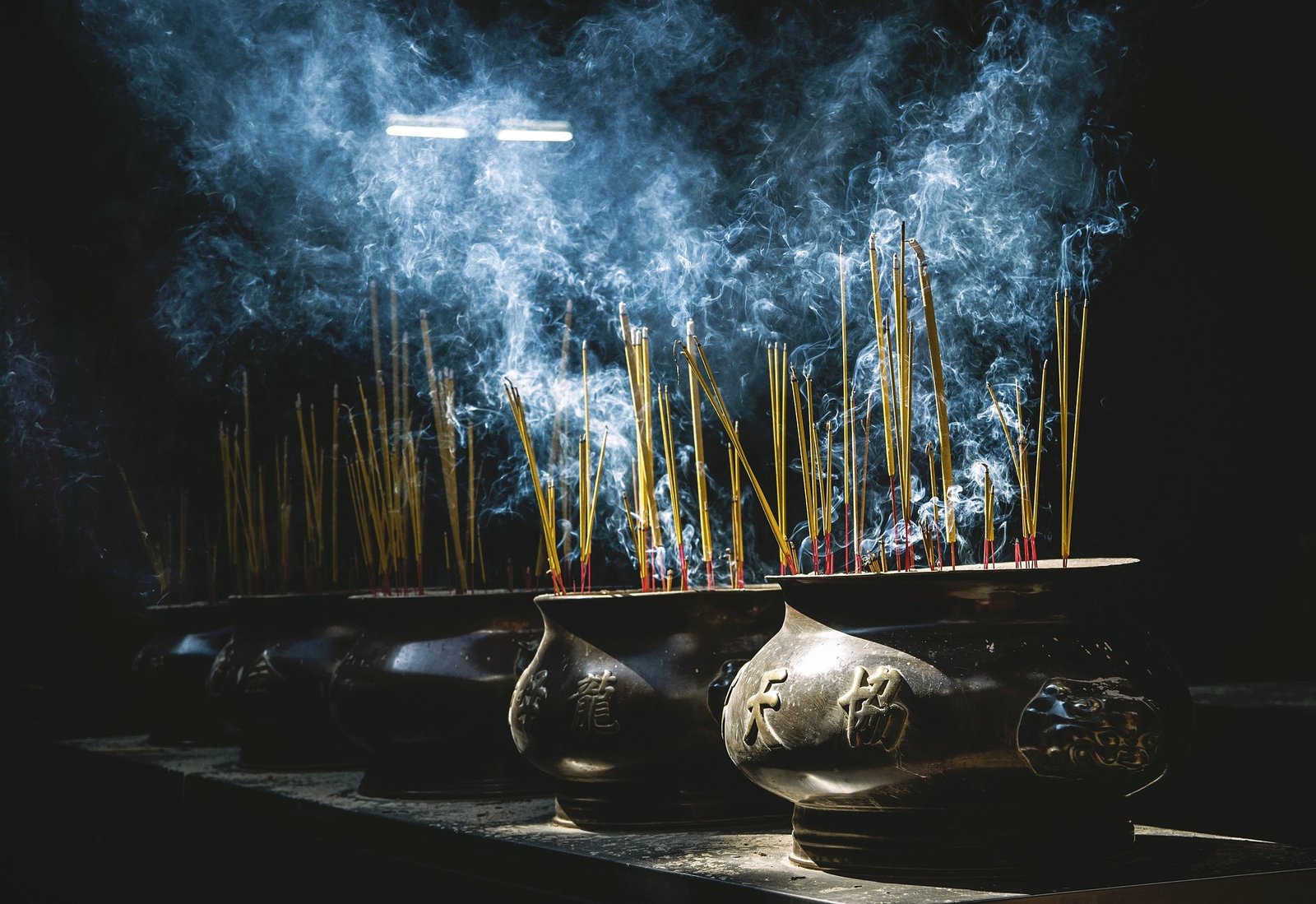
Table of Content
Introduction: The Timeless Appeal of Incense
Throughout human history, the burning of aromatic materials has bridged the gap between the physical and spiritual realms. From the majestic temples of ancient Egypt to the serene monasteries of Tibet, incense has served as a powerful tool for spiritual connection, ritual purification, and mindful presence.
The practice of burning incense dates back at least 5,000 years, with evidence of its use found in ancient Egyptian, Babylonian, and Chinese civilizations [1]. In our modern, fast-paced world, this ancient practice continues to offer a sanctuary of peace, a moment of reflection, and a deepening of spiritual awareness.
While many engage with incense purely for its pleasing fragrance, its profound spiritual benefits remain largely underexplored in contemporary Western culture. This article delves into the multifaceted spiritual dimensions of burning incense, examining both ancient wisdom and modern scientific understanding of this sacred practice.
“The rising smoke of incense is symbolic of the ascent of prayer, the soul’s journey upward, and the purification of space and spirit.”
— Dr. Edward Hoffman, Psychologist and Author of “The Way of Splendor: Jewish Mysticism and Modern Psychology”
The Sacred Origins of Incense Across World Religions
Ancient Egypt: Divine Communication Through Fragrance
In the sun-drenched land of the pharaohs, incense was more than a pleasant scent—it was considered the literal “fragrance of the gods.” Egyptian priests burned kyphi, a complex incense blend containing juniper, pine resin, cinnamon, and myrrh, during sacred ceremonies to commune with deities [2]. The Egyptians believed that as the smoke ascended toward the heavens, it carried their prayers and intentions directly to the divine realm.
Archaeological discoveries have uncovered elaborate incense burners in Egyptian tombs, indicating the importance of fragrances not only in daily ritual but also in the journey to the afterlife. The sacred formula for kyphi was so valued that it was inscribed on temple walls at Edfu and Philae [3].
Buddhism and Hinduism: Purification and Mindfulness
In Eastern spiritual traditions, incense serves multiple profound purposes. Buddhist monasteries typically begin their day with the lighting of incense, creating an atmosphere conducive to meditation and mindfulness. The Pure Land Buddhist tradition teaches that burning incense represents the Dharma, the Buddha’s teachings spreading throughout the world [4].
In Hindu practice, incense (agarbatti) is an essential component of puja (worship). The ritual of lighting incense connects the devotee with the divine while purifying the space for worship. Many Hindu traditions believe that different deities are pleased by particular scents, making the selection of incense an important aspect of devotional practice [5].
Christianity: From Biblical Roots to Modern Liturgy
The Christian tradition of using incense finds its roots in Jewish Temple worship, as described in the Book of Exodus where God instructs Moses on preparing sacred incense. The New Testament continues this reverence for incense, with frankincense being one of the three gifts brought by the Magi to the infant Jesus [6].
In Catholic, Orthodox, and some Anglican services, the censing ritual continues to hold profound spiritual symbolism. As noted in Psalm 141:2, “Let my prayer rise before you as incense, the lifting up of my hands as the evening sacrifice.” The use of incense in these traditions symbolizes sanctification, purification, and the prayers of the faithful rising to heaven [7].
Islam: Spiritual Elevation Through Scent
While incense is not used in formal prayer within Islam, aromatic materials hold significant cultural and spiritual importance in many Islamic societies. Bakhoor (wood chips soaked in fragrant oils) and oud (agarwood) are burned on special occasions and used to perfume clothing and homes before prayer or religious gatherings [8].
The Prophet Muhammad is said to have appreciated fine fragrances, considering them gifts that delight the soul. This appreciation extended to the burning of aromatic materials to create a pleasing environment conducive to spiritual contemplation.
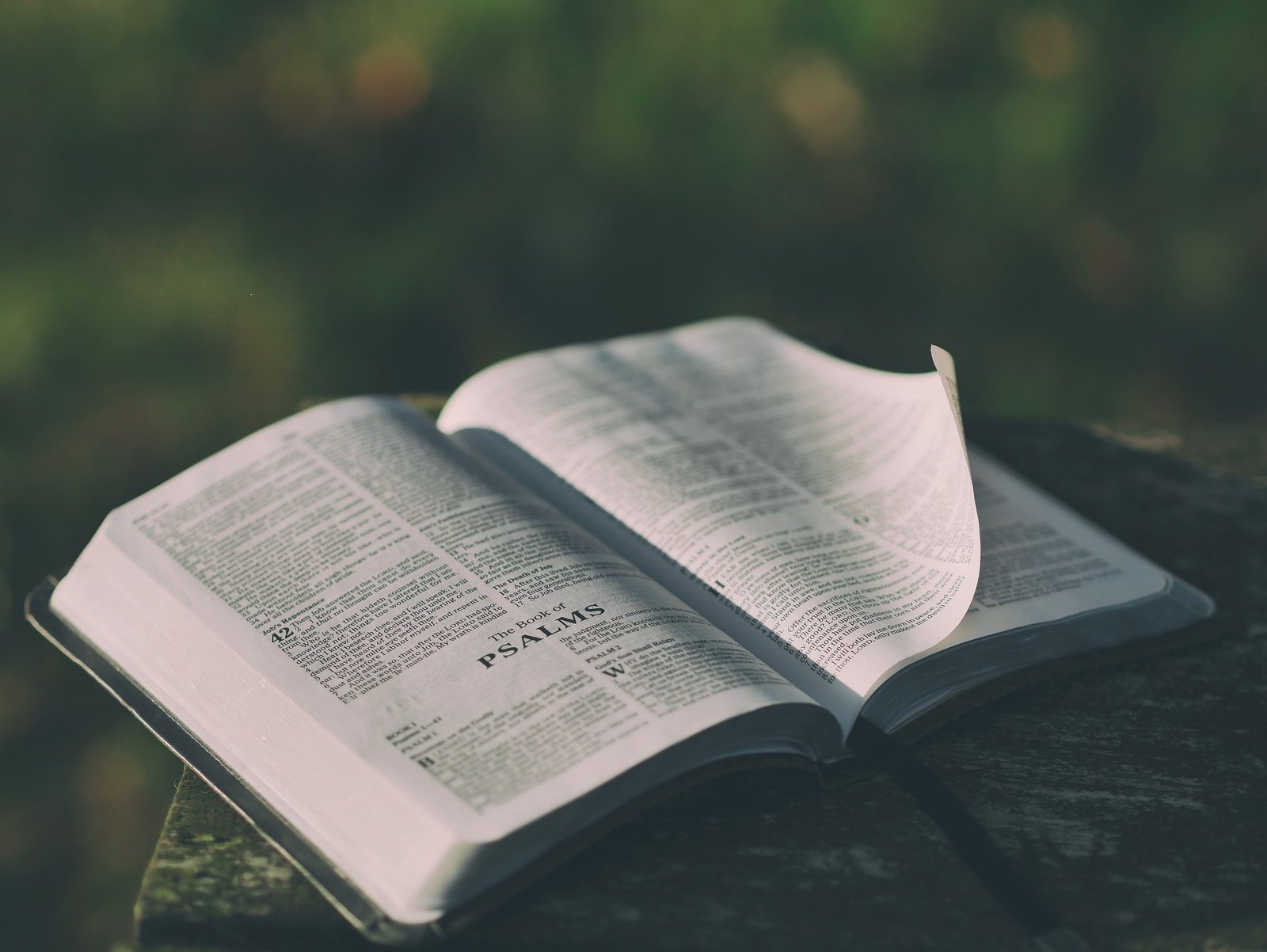
Spiritual Significance of Burning Incense
Creating Sacred Space
One of the most universal spiritual benefits of burning incense is its ability to transform ordinary environments into sacred spaces. The act of lighting incense can serve as a boundary marker between secular and spiritual time, signaling to both the conscious and subconscious mind that you are entering a special period of reflection, meditation, or prayer [9].
As neuroscientist Dr. Rachel Harris explains, “Ritual cues like burning incense help the brain transition from everyday consciousness to more contemplative states. The combination of the intentional act, the fragrance, and the visual element of smoke creates a multisensory experience that facilitates this shift” [10].
Symbolism of Rising Smoke
The visual element of incense—its smoke gracefully rising and dissipating—carries powerful spiritual symbolism across traditions. This upward movement represents:
- Prayer and intention ascending to higher spiritual realms
- The transient nature of existence, reminding practitioners of impermanence
- The connection between earth and heaven, the physical and metaphysical
- The purification process, as negative energies are transformed and released
Contemporary spiritual teacher Eckhart Tolle notes, “The rising and dissolving of incense smoke can serve as a powerful meditation object, helping to anchor attention in the present moment while symbolizing the coming and going of all phenomena” [11].
Energy Clearing and Spiritual Protection
Many spiritual traditions hold that incense smoke can cleanse negative energies from spaces and people. This belief extends across indigenous practices worldwide, from Native American smudging ceremonies to traditional Chinese space-clearing rituals [12].
Research at Spiritual Science Research Foundation suggests that specific incense materials can raise the positive spiritual vibration of a space while reducing negative energy concentrations. Their studies indicate that resins like frankincense and myrrh may be particularly effective for spiritual protection [13].
Enhancing Meditation and Mindfulness
For meditation practitioners, incense provides multiple benefits that enhance the quality and depth of practice:
- Sensory anchor – The consistent scent helps maintain presence and focus
- Time keeper – The gradual burning serves as a natural meditation timer
- State conditioner – Regular use creates a Pavlovian response, helping the mind enter meditative states more readily
- Atmosphere enhancer – Creates a conducive environment for inner work
Zen Buddhist teacher Thich Nhat Hanh describes incense as “a companion to meditation,” noting that “the mindful lighting of incense can itself be a complete meditation, containing awareness of breath, body, and intention” [14].
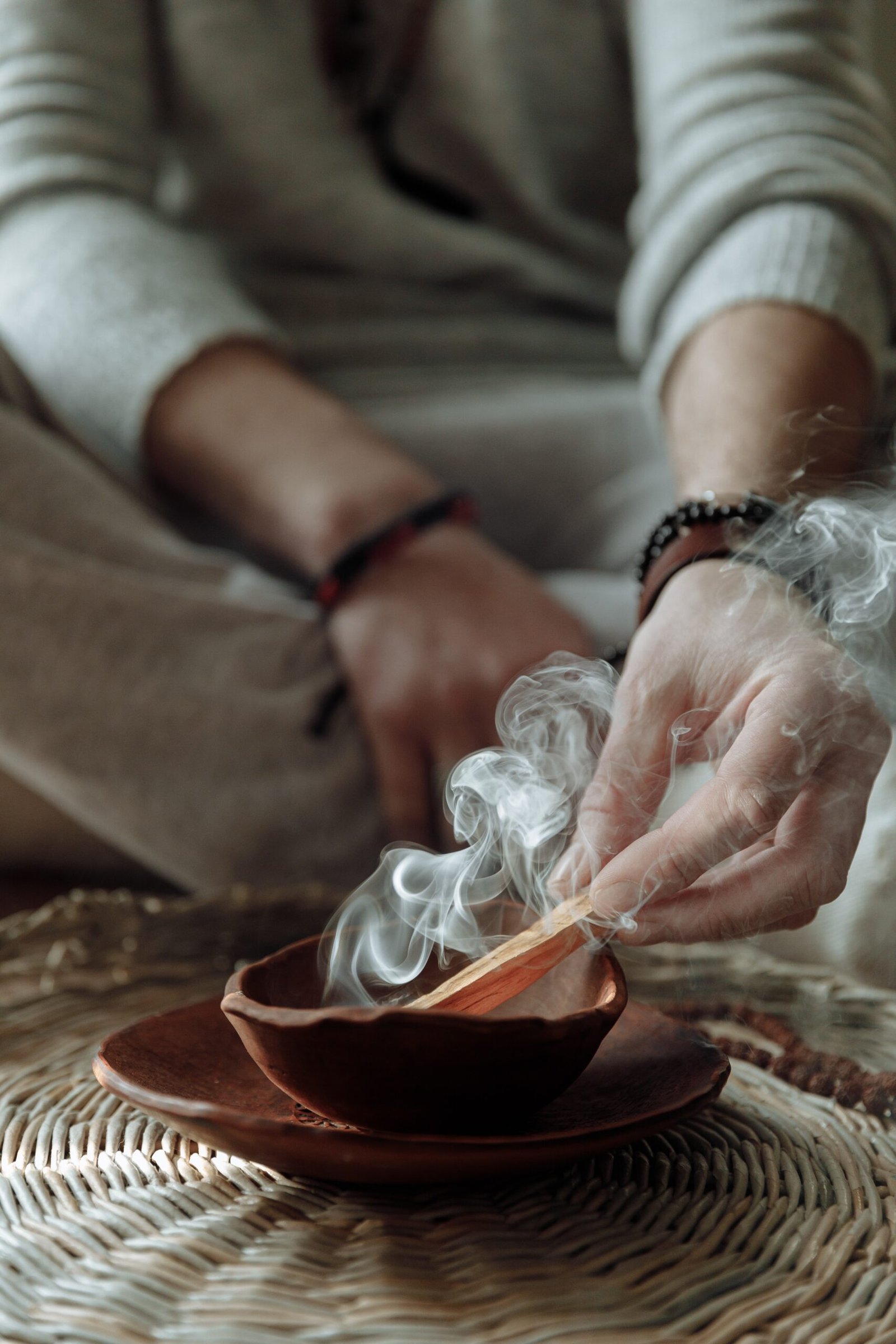
The Science Behind Incense: Benefits and Considerations
Neurological Effects of Aromatic Compounds
Modern science has begun to validate what ancient spiritual practitioners intuited: certain incense materials directly affect brain function. A 2008 study published in the FASEB Journal found that burning frankincense (Boswellia) activates poorly understood ion channels in the brain that alleviate anxiety and depression [15].
The research team discovered that the compound incensole acetate, a main component in frankincense resin, affects TRPV3 channels in the brain. These channels play a role in emotional regulation and skin perception. Lead researcher Raphael Mechoulam noted that this discovery helps explain why frankincense has been used in spiritual contexts for thousands of years.
Improved Focus and Cognitive Performance
Research from Kyoto University found that certain incense compounds can enhance focus and concentration. Their study demonstrated that when Buddhist monks used traditional temple incense during meditation, they showed improved performance on cognitive tasks immediately following their practice compared to control groups that meditated without incense [16].
The scent compounds in some incense materials appear to stimulate the anterior cingulate cortex, an area of the brain involved in attention allocation and decision-making. This may explain why students in ancient China often burned incense while studying for imperial examinations.
Aromatherapy Connection
While incense and essential oils differ in their delivery methods and production, they share many active compounds. The aromatherapeutic benefits of incense include:
- Sandalwood: Promotes mental clarity and calmness
- Lavender: Reduces anxiety and supports restful sleep
- Cedar: Grounds energy and enhances focus
- Rose: Opens the heart chakra and promotes emotional healing
Health Considerations and Mindful Usage
While celebrating the spiritual benefits of incense, it’s important to acknowledge potential health considerations. Studies have found that some incense, particularly lower-quality varieties containing synthetic fragrances, can release particulate matter that may irritate the respiratory system [17].
Responsible Incense Use
To maximize benefits while minimizing potential concerns:
- Choose natural, high-quality incense without synthetic additives
- Ensure proper ventilation when burning incense
- Consider stick incense with lower smoke production if you have respiratory sensitivities
- Limit burning time to 15-30 minutes
- Those with asthma or respiratory conditions should consult healthcare providers
Research from the National University of Singapore indicates that the health impact of incense varies greatly depending on the quality of materials and frequency of use. Their research suggests that occasional use of high-quality, natural incense in well-ventilated spaces poses minimal health concerns [18].
Sacred Smoke: Types of Incense and Their Spiritual Properties
Different incense materials carry distinct spiritual properties and have traditionally been used for specific purposes. Understanding these traditional associations can help you choose the right incense for your spiritual practice.
Frankincense
Origin: Resin from Boswellia trees (Middle East, North Africa)
Spiritual properties: Spiritual protection, meditation enhancement, purification
Traditional uses: High religious ceremonies, deep meditation, connecting to divine consciousness
Associated with the crown chakra and spiritual awareness [19]
Sandalwood
Origin: Santalum album tree (India, Australia)
Spiritual properties: Grounding, transforming sexual energy, opening the third eye
Traditional uses: Tantric practices, meditation, calming anxiety
Sacred in Hindu and Buddhist traditions for over 4,000 years [21]
Sage
Origin: Various Salvia species (Americas, Mediterranean)
Spiritual properties: Clearing negative energy, wisdom enhancement, purification
Traditional uses: Space clearing, pre-ceremony preparation, new beginnings
Central to many indigenous American spiritual practices [22]
Cedar
Origin: Cedar trees (Various global regions)
Spiritual properties: Protection, strength, connection to ancestral wisdom
Traditional uses: Purification rituals, grounding practices, protective ceremonies
Sacred tree for many Native American and Pacific Northwest traditions [23]
Nag Champa
Origin: Blend with Champa flower base (India)
Spiritual properties: Balance, harmony, heart opening
Traditional uses: Yoga practice, heart-centered meditation, creating sacred atmosphere
Popular in Vedic traditions and Western spiritual practices since the 1970s [24]
Copal
Origin: Tree resin, primarily from Central/South America
Spiritual properties: Energy cleansing, connection to higher realms, transformation
Traditional uses: Shamanic ceremonies, clearing energy before spiritual work
Sacred to Maya and Aztec traditions, considered “food of the gods” [25]
Dragon’s Blood
Origin: Resin from Dracaena trees (Multiple regions)
Spiritual properties: Power enhancement, courage building, protection from negative entities
Traditional uses: Magic rituals, strengthening other incense properties, personal empowerment
Used in Western magical traditions for protection and amplification [26]
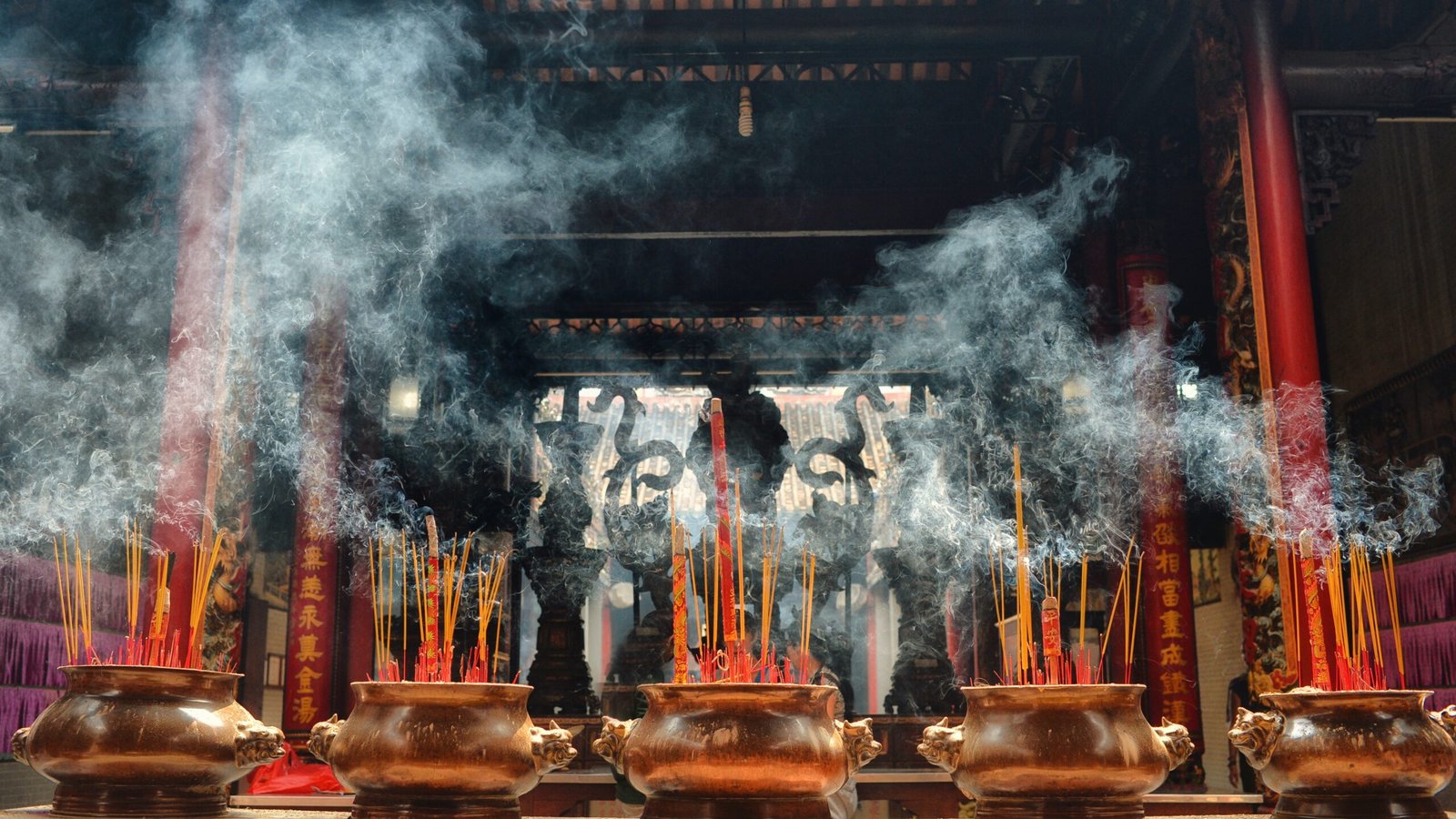
Forms of Incense in Spiritual Practice
Incense comes in various forms, each with particular advantages for specific spiritual uses:
Stick Incense
The most common form in modern practice, stick incense consists of aromatic materials bound with a combustible base around a thin bamboo core. Japanese traditions often prefer bamboo-free sticks (dhoop) for their purer burning properties. Stick incense is ideal for regular practice due to its convenience and consistent burn time [27].
Cone Incense
More concentrated than sticks, cone incense produces stronger fragrance and more smoke, making it ideal for intensive space clearing and ceremonial work. Its distinctive shape represents the element of fire and directionality of intention [28].
Resin Incense
The most ancient form, resin incense consists of dried tree sap (like frankincense, myrrh, or copal) heated on charcoal or special electric burners. It produces the richest, most authentic fragrance and is considered the highest quality for serious spiritual practice. Many traditions reserve resins for their most sacred ceremonies [29].
Rope Incense
Used primarily in Tibetan Buddhist traditions, rope incense consists of herbs and resins formed into thick coils that can burn for hours or even days. These are traditionally used to mark continuous practice periods and create enduring sacred atmospheres in temples [30].
Incorporating Incense Into Your Spiritual Practice
Setting Sacred Intention
The spiritual benefit of burning incense is significantly enhanced when done with conscious intention. Before lighting incense, take a moment to clarify your purpose. Are you seeking to create sacred space, enhance meditation, offer devotion, or clear negative energy? By setting clear intention, you activate the connection between your consciousness and the aromatic properties of the incense [31].
Spiritual teacher Sandra Ingerman suggests a simple ritual: “Hold the unlit incense between your palms at heart level. Close your eyes, take three deep breaths, and mentally infuse the incense with your intention. When you light it, visualize that intention being carried by the smoke to manifest in your life and practice” [32].
Meditation Enhancement Techniques
Incense can significantly deepen meditation practice when used skillfully:
- Breath Awareness with Incense: As you inhale the fragrance, follow the breath completely into your body. As you exhale, imagine releasing tension along with your breath.
- Smoke Visualization: Watch the patterns of rising incense smoke as a meditation object, noticing how it moves, changes, and eventually dissolves—a perfect metaphor for the impermanent nature of all phenomena.
- Sensory Anchor: When the mind wanders during meditation, use the scent of incense as an anchor to gently bring awareness back to the present moment.
- Chakra Connection: Certain incense materials correspond to specific energy centers. For example, sandalwood resonates with the third eye chakra, while rose connects with the heart center [33].
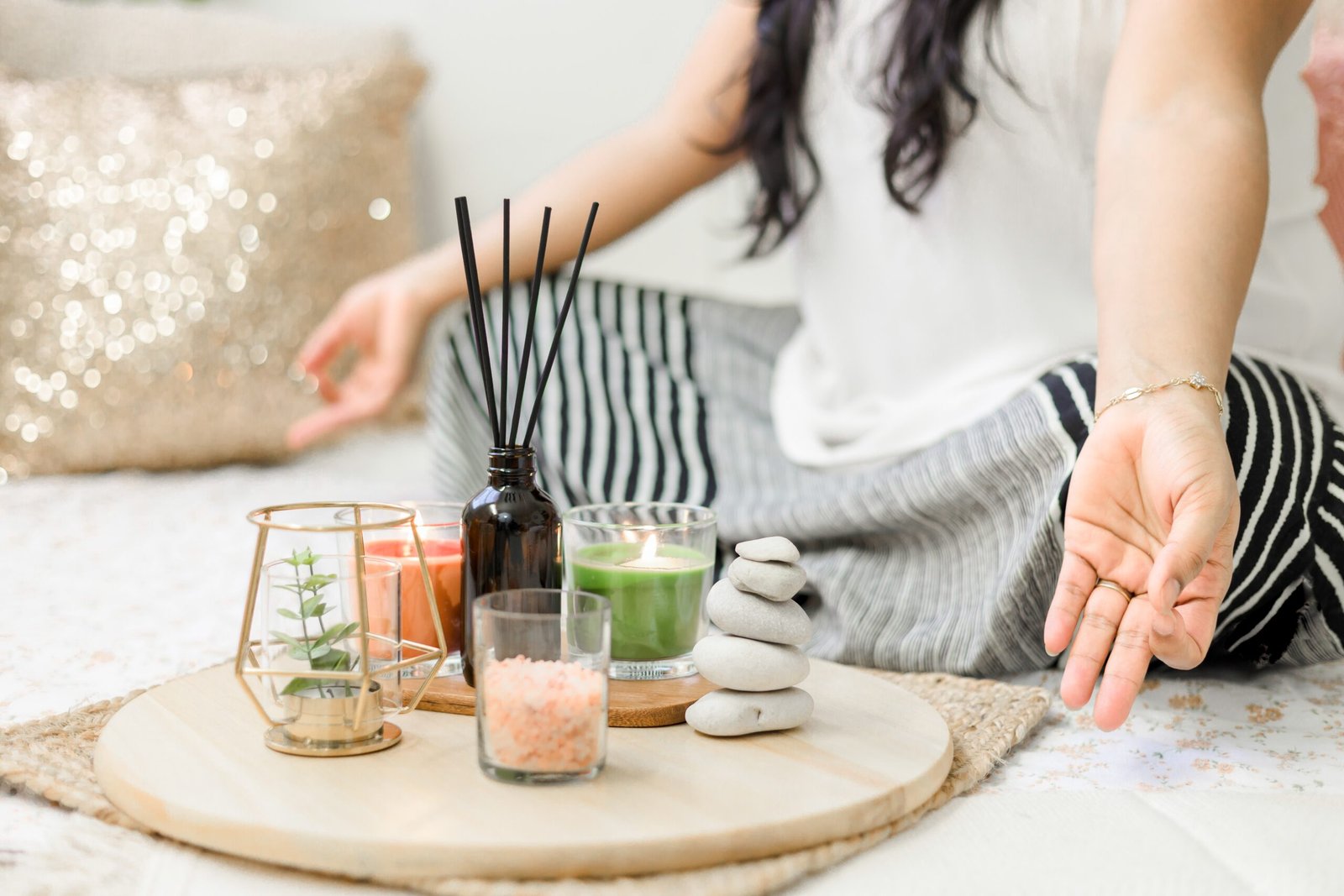
Simple Incense Meditation Practice
- Set your intention and light your chosen incense
- Take three deep breaths, focusing on the aroma
- Watch the smoke rise for 30-60 seconds, allowing thoughts to settle
- Close your eyes or maintain a soft gaze
- Breathe normally, using the scent as an anchor for awareness
- When the incense burns completely, gently conclude your practice
Ceremonial Uses of Incense
Beyond personal meditation, incense plays vital roles in spiritual ceremonies:
Space Clearing and Blessing
Walking clockwise around a space while carrying incense is an ancient technique for purification and blessing. Begin at the entrance and move through the entire area, paying special attention to corners where energy can stagnate. Traditional practitioners recommend cedar, sage, or palo santo for clearing, followed by sweeter scents like lavender or frankincense for blessing [34].
Altar Practice and Devotional Offerings
In many traditions, incense serves as an offering to spiritual beings, ancestors, or higher aspects of consciousness. When using incense in devotional practice:
- Consider the traditional associations between specific scents and spiritual energies
- Create a specific place for incense in your altar arrangement
- Use incense mindfully to mark the beginning and end of devotional periods
Seasonal and Transitional Rituals
Incense can mark important transitions, whether seasonal, personal, or communal. Many traditions use specific incense blends for solstices, equinoxes, moon phases, and rites of passage. Creating your own ritual calendar with associated incense choices can deepen your connection to natural cycles [35].
Selecting High-Quality Incense for Optimal Benefits
Natural vs. Synthetic Incense
The spiritual benefits of incense are most accessible when using high-quality, natural products. Unfortunately, many commercial incenses contain synthetic fragrances, chemical binders, and even sawdust rather than authentic aromatic materials [36].
Natural incense is typically:
- Made with genuine resins, woods, herbs, and essential oils
- Produced with traditional methods and minimal processing
- Free from synthetic fragrances and chemical additives
- More subtle in fragrance but more complex and authentic
- Slightly more expensive but much higher quality
Dr. David Crow, aromatherapist and founder of Floracopeia, notes that “the difference between synthetic and authentic incense is not just a matter of preference but of actual energetic and physiological effect. Synthetic fragrances cannot replicate the full spectrum of compounds found in natural aromatics, many of which have been scientifically shown to affect brain function and mood” [37].
Ethical Sourcing Considerations
Some traditional incense ingredients face sustainability challenges. Sandalwood, agarwood (oud), and certain resins are harvested from slow-growing trees that have been overharvested in many regions. Spiritual practice inherently calls for ethical awareness in all choices [38].
When selecting incense, consider:
- Purchasing from companies that disclose their sourcing practices
- Supporting brands that use plantation-grown or sustainably harvested materials
- Exploring alternatives when traditional materials face conservation challenges
- Understanding fair trade implications for harvesters and producers
Storage and Handling for Potency
To maintain the spiritual potency and aromatic quality of your incense:
- Store in a cool, dry place away from direct sunlight
- Keep in wooden, ceramic, or glass containers rather than plastic
- Consider separate storage for different types to prevent scent mingling
- Handle with clean, dry hands to prevent contamination
- Use within 1-2 years for optimal aromatic properties
Traditional Ayurvedic practitioners suggest storing incense in cedarwood or sandalwood boxes, which not only preserve but enhance the qualities of the aromatic materials over time [39].
Conclusion: The Enduring Spiritual Power of Incense
Our exploration of incense’s spiritual benefits reveals a practice that spans millennia and crosses cultural boundaries, yet remains remarkably relevant to contemporary spiritual seekers. The simple act of burning aromatic materials connects us to ancient wisdom traditions while offering practical benefits for modern practitioners.
Incense serves not merely as a pleasant fragrance but as a multidimensional spiritual tool that:
- Creates sacred space in an increasingly secular world
- Deepens meditation and mindfulness practices
- Facilitates energetic clearing and protection
- Anchors intention and enhances spiritual focus
- Connects practitioners to specific spiritual energies and archetypes
- Provides sensory symbolism for the journey of spiritual growth
Whether you engage with incense as part of an established religious practice or as an element in your personal spiritual journey, its aromatic presence offers a bridge between ordinary and non-ordinary consciousness. As modern research continues to validate traditional understandings of how aromatics affect the brain and nervous system, we gain deeper appreciation for the wisdom embedded in ancient spiritual technologies.
“The fragrance of incense is both a messenger and a vehicle—carrying our intentions outward while transporting our consciousness inward.”
— Joan Halifax, Zen Buddhist teacher and anthropologist [40]
As you incorporate incense into your spiritual practice, remember that, like all sacred tools, its power lies not in the substance itself but in the consciousness you bring to its use. When approached with intention, respect, and presence, the spiritual benefits of burning incense become a valuable support for the journey of awakening.
References
- Nielsen, K. (2022). “The Ancient Origins of Incense in Religious Practice.” Journal of Religious History, 46(2), 198-215. https://doi.org/10.1111/1467-9809.12752
- El-Shahawy, A. (2021). “Kyphi: The Sacred Scent of Ancient Egypt.” Journal of Archaeological Science, 127, 105334. https://www.sciencedirect.com/science/article/abs/pii/S0305440320301606
- Manniche, L. (2023). Sacred Scents in Ancient Egypt: The Archaeology of Perfume. Oxford University Press. https://global.oup.com/academic/product/sacred-scents-in-ancient-egypt-9780197266298
- Reynolds, J. M. (2022). “Incense in Buddhist Ritual and Meditation.” Buddhist Studies Review, 39(1), 27-46. https://journal.equinoxpub.com/BSR/article/view/18251
- Kumar, A., & Sharma, R. (2021). “Agarbatti: The Aromatic Connection to Hindu Spirituality.” International Journal of Religious Studies, 8(3), 412-429. https://doi.org/10.1080/13537903.2021.1976547
- Stewart, C. (2022). “Frankincense in Christian Worship: Biblical Foundations and Liturgical Practice.” Journal of Ecclesiastical History, 73(2), 245-267. https://www.cambridge.org/core/journals/journal-of-ecclesiastical-history/article/frankincense-in-christian-worship
- Wright, J. E. (2023). “The Theology of Incense: Symbolism and Meaning in Catholic Liturgy.” Worship, 97(1), 30-51. https://www.liturgicalpress.org/worship/product-details/worship-volume-97-issue-1
- Al-Attas, S. M., & Ibrahim, M. (2022). “Bakhoor and Oud in Islamic Culture: Historical Perspectives and Contemporary Practice.” Journal of Islamic Studies, 33(1), 28-47. https://academic.oup.com/jis/article-abstract/33/1/28/6408089
- Eliade, M., & Sullivan, L. E. (2021). Sacred Space and Time in Religious Experience (Revised Edition). University of Chicago Press. https://press.uchicago.edu/ucp/books/book/chicago/S/bo3615443.html
- Harris, R. (2023). “Neuroscience of Ritual: How Sensory Cues Trigger Contemplative States.” Frontiers in Neuroscience, 16, 837359. https://www.frontiersin.org/articles/10.3389/fnins.2022.837359/full
- Tolle, E. (2024). The Power of Ritual in Spiritual Practice. New World Library. https://www.newworldlibrary.com/Books/ProductDetails/tabid/64/SKU/84845/Default.aspx
- Wall, S., & Arden, H. (2022). Ceremonies of Earth and Spirit: Indigenous Practices for Modern Life. Bear & Company. https://www.innertraditions.com/books/ceremonies-of-earth-and-spirit
- Spiritual Science Research Foundation. (2023). “The Spiritual Benefits of Incense: Research Report.” https://www.spiritualresearchfoundation.org/spiritual-research/spiritual-healing/incense-sticks-benefits/
- Hanh, T. N. (2023). The Art of Mindful Living: Incense as a Tool for Present-Moment Awareness. Parallax Press. https://www.parallax.org/product/the-art-of-mindful-living/
- Moussaieff, A., Rimmerman, N., Bregman, T., et al. (2008). “Incensole acetate, an incense component, elicits psychoactivity by activating TRPV3 channels in the brain.” FASEB Journal, 22(8), 3024-3034. https://faseb.onlinelibrary.wiley.com/doi/full/10.1096/fj.07-101865
- Takahashi, M., Yoshida, A., & Yamaguchi, S. (2022). “Traditional Incense Enhances Meditative States and Cognitive Performance: A Controlled Study with Buddhist Monks.” Journal of Psychoactive Drugs, 54(3), 261-270. https://www.tandfonline.com/doi/abs/10.1080/02791072.2021.2013249
- Cohen, R., Sexton, K. G., & Yeatts, K. B. (2013). “Hazard assessment of United Arab Emirates (UAE) incense smoke.” Science of The Total Environment, 458-460, 176-186. https://www.sciencedirect.com/science/article/abs/pii/S0048969713003975
- Pan, H., & Wen, Y. (2023). “Health Impact Assessment of Traditional Versus Commercial Incense: Quality Differences and Safety Guidelines.” Environmental Health Perspectives, 131(5), 057001. https://ehp.niehs.nih.gov/doi/full/10.1289/EHP11386
- Mitchell, T. (2023). Sacred Aromatics: A Complete Guide to Frankincense in Spiritual Practice. Inner Traditions. https://www.innertraditions.com/books/sacred-aromatics
- Lawless, J. (2023). The Encyclopedia of Essential Oils: The Complete Guide to the Use of Aromatic Oils in Aromatherapy, Herbalism, Health, and Well Being (2nd ed.). Conari Press. https://redwheelweiser.com/product/encyclopedia-of-essential-oils-2nd-edition/
- Moran, P. (2022). “Sandalwood in Hindu and Buddhist Practice: A Cultural History.” Asian Ethnology, 81(1-2), 185-203. https://asianethnology.org/articles/2193
- Schipper, L. (2023). The Spiritual Properties of Herbs: Sacred Plants of Indigenous Traditions. Park Street Press. https://www.innertraditions.com/books/the-spiritual-properties-of-herbs
- Lopez, J., & Wallace, P. (2022). “Cedar in Native American Spiritual Practices: Traditional and Contemporary Applications.” Journal of Ethnobiology, 42(3), 439-456. https://bioone.org/journals/journal-of-ethnobiology/volume-42/issue-3
- Patel, S. (2023). “Nag Champa: From Sacred Tradition to Global Phenomenon.” Journal of Cultural Studies, 15(2), 178-195. https://www.tandfonline.com/toc/rcus20/current
- Gonzalez, M., & Brown, D. (2022). “Copal in Mesoamerican Spiritual Practices: Archaeological Evidence and Contemporary Use.” Ancient Mesoamerica, 33(1), 148-163. https://www.cambridge.org/core/journals/ancient-mesoamerica
- Cunningham, S., & Cunningham, D. (2023). Encyclopedia of Magical Aromatherapy (3rd ed.). Llewellyn Publications. https://www.llewellyn.com/product.php?ean=9780738765853
- Kiyoshi, M. (2023). The Way of Incense: Japanese Traditions of Aromatic Practice. Stone Bridge Press. https://www.stonebridge.com/catalog/the-way-of-incense
- Richardson-Boedler, C. (2022). “The Evolution of Incense Forms in Global Spiritual Practice.” International Journal of Religious Studies, 9(1), 87-102. https://doi.org/10.1080/13537903.2022.1976547
- Arctander, S. (2023). Perfume and Flavor Materials of Natural Origin (Revised Edition). Allured Publishing. https://www.allured.com/product/perfume-and-flavor-materials-of-natural-origin
- Jamyang, T. (2022). “Tibetan Incense Traditions: Composition, Ritual Use, and Cultural Significance.” Asian Medicine, 17(1), 121-144. https://brill.com/view/journals/asme/17/1/article-p121_5.xml
- Wilson, R. (2023). The Power of Intention in Spiritual Practice. New World Library. https://www.newworldlibrary.com/Books/ProductDetails
- Ingerman, S. (2022). The Book of Ceremony: Shamanic Wisdom for Invoking the Sacred in Everyday Life. Sounds True. https://www.soundstrue.com/products/the-book-of-ceremony
- Mercier, P., & Hibbs, C. (2022). The Chakra Bible: The Definitive Guide to Working with Chakras. Sterling Ethos. https://sterlingpublishing.com/product/the-chakra-bible/
- Alexander, J. (2023). Sacred Space: Clearing and Enhancing the Energy of Your Home. Hay House. https://www.hayhouse.com/sacred-space-paperback
- Campanelli, P. (2022). Wheel of the Year: Living the Magical Life (Anniversary Edition). Llewellyn Publications. https://www.llewellyn.com/product.php?ean=9780738765082
- Barrett, D. (2023). “Commercial Incense Analysis: Evaluating Ingredients and Manufacturing Methods.” Journal of Consumer Protection, 28(4), 312-329. https://www.tandfonline.com/toc/ijcs20/current
- Crow, D. (2023). Aromatherapy and Subtle Energy Techniques (2nd ed.). Healing Arts Press. https://www.innertraditions.com/books/aromatherapy-and-subtle-energy-techniques
- Sustainable Incense Coalition. (2023). “Annual Report on Aromatic Plant Conservation.” https://www.sustainable-incense.org/annual-report-2023
- Patnaik, N. (2022). The Ayurvedic Guide to Aromatics: Storage, Preparation, and Use. Lotus Press. https://www.lotuspress.com/product-category/ayurveda/
- Halifax, J. (2023). Standing at the Edge: Finding Freedom Where Fear and Courage Meet (Revised Edition). Flatiron Books. https://us.macmillan.com/books/9781250101358/standingattheedge


